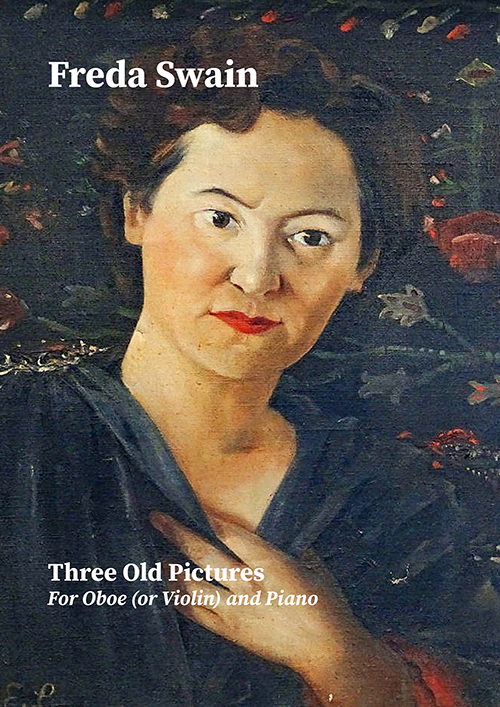Freda Swain
Three Old Pictures For Oboe (or Violin) and Piano
Three Old Pictures For Oboe (or Violin) and Piano
Couldn't load pickup availability
Share
Three Old Pictures
For Oboe (or Violin) and Piano
Swain composed this short suite in 1963, during a period when she was increasingly devoting herself to simpler works for teaching purposes. These three rather short pieces also probably belong to this category, even though they are not intended for beginners.
Swain uses French titles for the individual movements, a feature that recurs throughout her works. Examples include « Paysage » for two violins, « Vieille Chanson Triste » and « Berceuse » for violin and piano, and « Chanson du petit Berger » for piano.
The first piece, 'La vieille Marquise', is indeed vaguely reminiscent of 'Vieille Chanson Triste'. Both are in A minor and begin with a pure, empty fifth in the piano bass; both pieces also have a melancholic mood. Swain writes 'quasi gavotta' as the performance marking.
The second piece, 'Les Elegants', 'quasi minuetto', is in A major and provides a beautiful contrast to the previous work. Here, the harmonies are much more adventurous and some of the chords almost resemble jazz.
The finale is the cheerful and rousing 'Tambourin Gai'. The term 'tambourin' originally referred to a small drum or a folk dance from southern France in 6/8 or 2/4 time. In musical history, 'tambourins' are lively dance movements with a strong rhythm. 'Gai' means 'cheerful' or 'merry'. Therefore, a 'Tambourin gai' is a 'merry/cheerful tambourine' – usually a lively piece of music with a strong rhythm in the style of this dance.
Several works bear this title, particularly in the French Baroque era. Jean-Philippe Rameau (1683–1764) and François-Joseph Gossec (1734–1829), for example, composed pieces with this title. It is interesting that Swain's piece also begins with fifths in eighth notes on the piano and has several other similarities with Gossec's work.
Given that the previous two movements, 'Quasi Gavotta' and 'Quasi Minuetto', also refer to Baroque dances, it is possible that Swain wrote the entire suite as a tribute to French Baroque music.

